Genre: Action Developer: Western Technologies Inc. Publisher: Acclaim Players: 1 Released: 1993
It is always a pleasure for comic book fans to see their favorite heroes starring in an interactive video game. Spider-Man and X-Men combines two of Marvel Comics’ most popular franchises into one playable experience. Originally released for the SNES in ’92, it was ported a year later to the Genesis/Game Gear. While the SNES version boasts somewhat better graphics, the Genesis version has more responsive controls and runs a lot faster than its counterpart. This makes the game a little easier and less frustrating, a good thing considering how intensely difficult this game can be.
The storyline is simple, but appropriate. The X-Men get captured by the villainous Arcade, and it is up to Spider-Man to help them escape. This is explained in a brief comic at the start. While the explanation is lacking any major details or back story, it gives the player just enough to know what needs to be done, and for a 16-bit platformer that’s quite fair. Additional details can be read in the manual.
The game allows you to control five characters: Spider-Man, Wolverine, Cyclops, Storm and Gambit. Each character has a set of their own levels to complete. Their abilities are fairly accurate to their comic book histories. Spider-Man is quick and agile, can stick to walls, web sling and shoot webs as an attack. Wolverine has his claws and a surprisingly effective healing factor, Cyclops fires optic beams, Gambit throws explosive cards (of which he has a limited supply) and Storm can shoot lightning bolts and create whirlpools/tornadoes.
In addition to basic platformer elements each character’s levels have unique challenges. Spider-Man’s levels require some precise web slinging and later feature blowing wind and weather effects. Wolverine’s levels are mostly straight on combat and platforming. Cyclops has to navigate through a maze of mine carts, electrified tracks, and fight some rather large bosses. Storm’s levels are more SHMUP than platformer as she has to swim through a claustrophobic underwater maze (some disregard of elementary physics is required here, as I have no idea how her lightning bolts don’t just FRY EVERYTHING, but hey it’s the video game world after all, where a fat plumber can shoot fireballs underwater and blue hedgehogs can break the sound barrier, so let it slide). Gambit’s levels are probably the most challenging in the game, as they add the challenges of a scrolling screen and limited ammo, plus a lot of level memorization is required. Making a wrong turn usually means instant death, but fortunately his levels aren’t unreasonably long.
Upon completing their initial levels each character has to beat a “behind the scenes” stage. These are generally shorter and easier than their previous challenges and serve as something of a reward for making it this far. A pleasant highlight of these is the Storm level which now has her out of the water and in a regular platforming scenario, featuring a new sprite and revised powers.
Level design is very polished. While some level memorization is required it is not an unreasonable demand, there is room for exploration to find hidden power-ups and alternative paths, and once you find the best ones stage progression becomes a lot faster. The levels are interesting, where each one feels like a complete environment instead of a series of platforms, and you never feel like you’ve passed the same area twice. The end of each level features a boss, and while often very challenging, most bosses don’t require any unintuitive dirty tricks to be defeated, and a simple “hit him until he stops moving” strategy is sufficient (the Rhino and Juggernaut bosses being a slight variation on this).
The game’s absolute strong point is the phenomenal music. Every level features a moody alterna-electronic-grunge track that will leave you nostalgic for the ’90s. This is 16-bit video game music at its finest. Each track complements it’s level perfectly, adding to the mood of not just this game but the characters and the Marvel Comics universe at large. I am quite certain that the creators of recent Marvel movies and more recent games have all taken inspiration from this soundtrack because of how iconic and appropriate it is. The second you hear the tunes in the Spider-Man levels you just think, “wow this sounds right, this is Spider-Man.”
The game’s major weakness is the graphics, which are unfortunately on the poor side for a 16-bit console release. Not the worst by any means, but they do look more like they belong in a late generation Master System game than a Genesis title. The backgrounds are minimal utilizing a lot of black space, and the character sprites are fairly small. While the small sprites allow you to see more of the level which is crucial to your survival, they could have done with more detail, for that matter so could the levels. A little shading and the addition of small details and objects would’ve gone a long way to make this game look better (think of how detailed the levels and sprites are in Contra Hard Corps or Sonic 2).
Controls on the other hand are spot on. Responsiveness is excellent, collision detection is perfect and you really do feel like you’re controlling an athletic super hero, instead of a sluggish mess of pixels. Another surprising plus is the enemy AI. While enemy behaviors are limited to typical platformer actions, it is interesting to see them react to your character’s presence. Enemies in some cases follow you, run away, target your location, or even swarm and attempt to corner you. Not amazing feats by today’s AI standards, but quite advanced for platform gaming where typical enemies stand and shoot mindlessly regardless of your actions.
Overall, Spider-Man and X-Men is a fun experience. It is by no means an easy game and takes many replays to complete. However for anyone seeking a challenge this will be a treat. Don’t let the poor graphics turn you off, as soon as you hear the music and start playing you’ll forget all about that and lose yourself in a polished, highly enjoyable gaming experience.
SCORE: 8 out of 10

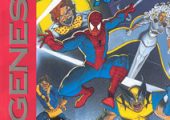
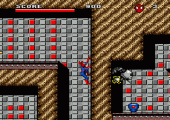
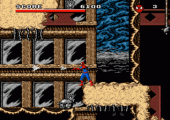
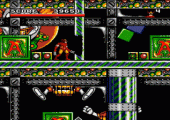
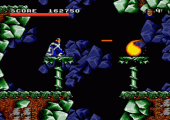
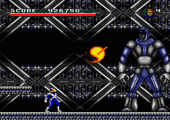
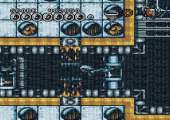
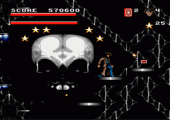
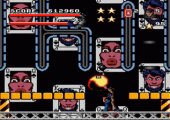
Oh god no… this game is REALLY not as good as the reviewer explain. First, this is clearly the worst X-Men game on the 16-bit. Then, it may also be the worst Spiderman game in terms of graphics, sound and gameplay overall (alongside the 94′ animated series tie-in). The level design is terrible from A to Z and the awkard difficulty curve doesn’t help the player to have a pleasant experience.
3/10
I’d give this 6/10, maybe 5/10. I’m a big fan of the SNES version, so it’s painful to see what a downport this one is: the graphics, controls, and especially the soundtrack have taken a huge hit.
The SNES soundtrack is a masterpiece that seems designed for that console’s audio hardware, so maybe it’s inevitable something would be lost in translation. But they also cut two of the songs — the Storm and Wolverine stages just reuse the Cyclops and Gambit music — which is hard to justify. I guess if you haven’t heard the SNES version this one seems passable, and some parts are OK, but at times it’s almost unlistenable when compared directly.
That said, the gameplay is still intact, and I personally dig the game’s brutally intense action-platforming. Actually, it’s not really that hard — just a matter of learning the levels and a few patterns — but the limited lifestock and inexcusable lack of continues/savegame makes it seem that way. However, the 1up exploit in Gambit’s first stage partially fixes that issue, and since it’s in both versions, that makes me wonder whether the designers deliberately tucked it in there as a way of saying “Sorry, management wouldn’t pay for save RAM.”
But take away the Gambit extra life trick, and it’s basically unplayable. Honestly, there was no need to have any lifestock in this game at all, and with unlimited lives, suddenly the whole thing works.
BTW I don’t know what the reviewer’s on about with the Genesis version being “faster”; if anything it plays slower, because some enemies are now granted an invincibility period that forces you to wait. Gambit’s stages suffer from this, and the smooth flow of Gambit 1 in the SNES version isn’t as good here. Plus you can jump over the spiked ball, which will roll (silently!) on its merry way and wait for you at the end of the stage like a disappointed chaperone.